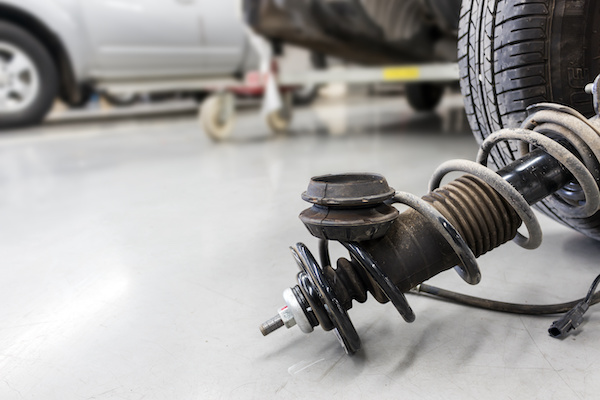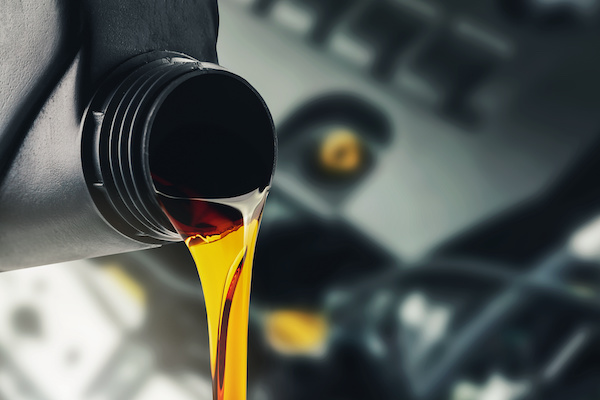Posted on 12/21/2021
.jpeg)
Spark plugs are small yet vital parts of an engine responsible for transmitting the spark to ignite the compressed fuel-air mixture. The most common reasons for changing spark plugs are wear and tear, fouling, and improper gap. If you don't know how often to change your spark plugs, here are guidelines on how often a professional can help you do this maintenance. What Are Spark Plugs? Spark plugs are the tiny pieces of metal that produce the spark needed to create combustion in an engine. They consist of a metal wire and electrode. A car's engine needs a spark plug for ignition. If you don't change your spark plugs regularly, it can lead to problems, such as reduced gas mileage, reduced power, and even engine failure. How Often Should You Change Your Spark Plug? The time it takes for a spark plug to become worn out depends on many factors. For example, the type of engine oil, recommendations of the manufacturer, and how ... read more
Posted on 11/29/2021

The vehicle's suspension system (i.e., shocks or struts) is a part of our cars that we take for granted. These parts will wear out after holding tons of metal year after year, and you will need suspension repair. Some people only associate shocks and struts with the smoothness of a ride, so they don't consider it a must-have service. However, having poor suspension can significantly impact your control and handling of your vehicle, especially during turns and stops. So how do you know if these parts are worn out? Rough ride A suspension inspection is necessary if you begin to feel every bump in the road or when every divot in the road causes the car to "bounce". Drifting or pulling With a faulty suspension system, you might feel the vehicle drift left or right when you're making a turn. That means that your shocks are no longer keeping the vehicle body down against the centrifugal force. It's time to get your car to the shop before your car turns ove ... read more
Posted on 10/20/2021

A dead car battery can be a considerable inconvenience, but there are ways to dodge the problem. To avoid dealing with a drained car battery, you need to understand what causes it to begin with. Before you grab those jumper cables, check out these five common causes of a dead battery. Scenario #1: You Leave Your Lights On Similar to how you should always make sure the lights are off when you leave your home, you need to do the same for your car. Thankfully, most modern vehicles have headlights that turn off your headlights when you turn the vehicle off. However, if you have an older vehicle, your headlights may remain on until someone manually switches them off. Otherwise, it will stay on until it drains the battery. Scenario #2 Your Connections Are Corroded The terminals, the points where you apply the jumper cables, can sometimes get corrupted over time. If your terminals are weakened in any way, you will not be able to transmit the power necessary to start your car and run its e ... read more
Posted on 9/27/2021

Engine oil or motor oil is the most frequent and ultimate responsibility for every car owner. Your vehicle depends on oil to enable the various parts of your engine to run without bumping against each other. It also serves to lubricate the engine and stabilize the high temperatures under the hood. There are many rumors surrounding engine oil, and it's time to give it to you straight. Here are some of the most common motor oil: You should have your oil changed every 3,000 miles. You may often hear the phrase "every 3,000 miles" associated with oil change intervals. However, the number 3,000 isn't as significant as you may have thought. Nowadays, most vehicles use synthetic or synthetic blends that are higher in quality and can go as long as 8,000 to 10,000 miles between each change. To find the best interval for your car, please refer to your owner's manual for the specific number. You cannot switch back after switching to synthetic oil. This misconception is a m ... read more
Posted on 8/23/2021

If you've ever driven through a thick layer of fog, you should surely know NOT to use your vehicle's high beam headlights. You should avoid making this silly mistake because the headlights flash directly into the fog, reflecting the light right back in your face, making it more challenging to see. As the name implies, your car's fog lights are intended to be used so that you can see better while operating your vehicle through heavy fog, mist, snow, and even sand and dust. Fog lights are separate from regular headlights, which have high-beam and low-beam functions. The difference in these lights is primarily their shape. Fog lights are bar-shaped and aimed sharply toward the ground, providing short-range clarity only just in front of your vehicle. By aiming downward, fog lights eliminate the glare caused by regular headlights, allowing you to see adequately in fog. By contrast, the usual high- and low-beam lights aim straight ahead, lighting up the ro ... read more